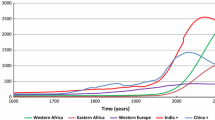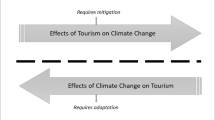Abstract
The efficient use of water resources directly affects environmental, social, and economic development; therefore, it has a significant impact on urban populations. A slacks-based measure for data envelopment analysis (SBM-DEA) has been widely used in energy efficiency and environmental efficiency analyses in recent years. Based on this model, data from 316 cities were examined and a category method was employed involving three different sorting techniques to empirically evaluate the efficiency of urban water resource utilization in China between 2000 and 2012. The overall efficiency (OE) of urban water resource utilization in China was initially low, but has improved over the past decade. The scale efficiency (SE) was higher than the pure technological efficiency (PTE); PTE is a major determining factor of OE, and has had an increasingly significant effect. The efficiency of water resource utilization varied according to the region, urban scale, and economic function. The OE score for the eastern China was higher than for the rest of the region, and the OE score for the western China was higher than for the central China. The OE score for urban water resource utilization has improved with urban expansion, except in the case of small cities. The SE showed an inverted ′U-shaped′ trend with increasing urban expansion. The OE of urban water utilization in comprehensive functional cities was greater than in economic specialization cities, and was greater in heavy industry specialization cities than in other specialization cities. This study contributes to the field of urban water resource management by examining variations in efficiency with urban scale.
Similar content being viewed by others
References
Alsharif K, Feroz E H, Klemer A et al., 2008. Governance of water supply systems in the Palestinian Territories: a data envelopment analysis approach to the management of water resources. Journal of Environmental Management, 87(1): 80–94. doi: 10.1016/j.jenvman.2007.01.008.
Bian Y, Yang F, 2010. Resource and environment efficiency analysis of provinces in China: a DEA approach based on Shannon′s entropy. Energy Policy, 38(4): 1909–1917. doi: 10.1016/j.enpol.2009.11.071
BSJP (Bureau of Statistics of Jilin Province), 2001–2013. Jilin Statistical Yearbooks. Beijing: China Statistics Press. (in Chinese)
Charnes A, Cooper W W, 1962. Programming with linear fractional functions. Naval Research Logistics Quarterly, 9(3): 181–186. doi: 10.1002/nav.3800090303.
Charnes A, Cooper W W, Rhodes E, 1978. Measuring the efficiency of decision making units. European Journal of Operational Research, 2(6): 429–444. doi: 10.1016/0377-2217(78)90138-8.
Cubbin J, Tzanidakis G, 1998. Regression versus data envelopment analysis for efficiency measurement: an application to the England and Wales regulated water industry. Utilities Policy, 7(2): 75–85. doi: 10.1016/S0957-1787(98)00007-1.
DUS NBSC (Department of Urban Surveys, Nitional Bureau of Statistics of China), 2001–2013. China City Statistical Yearbook. Beijing: China Statistics Press. (in Chinese)
Du J, Liang L, Zhu J, 2010. A slacks-based measure of super-efficiency in data envelopment analysis: a comment. European Journal of Operational Research, 204(3): 694–697. doi: 10.1016/j.ejor.2009.12.007.
Dyson R G, Allen R, Camanho A S et al., 2001. Pitfalls and protocols in DEA. European Journal of Operational Research, 132(2): 245–259. doi: 10.1016/s0377-2217(00)00149-1.
Fang Chuanglin, Guan Xingliang, 2011. Comprehensive measurement and spatial distinction of input-output efficiency of urban agglomerations in China. Acta Geographica Sinica, 66(8): 1011–1022. (in Chinese)
Guo Tengyun, Xu Yong, Wang Zhiqiang, 2009. The analyses of metropolitan efficiencies and their changes in China based on DEA and Malmquist Index Models. Acta Geographica Sinica, 64(4): 408–416. (in Chinese)
GPBS (Guizhou Provincial Bureau of Statistics), NBSSOG (NBS Survey Office in Guizhou), 2001–2013. Guizhou Statistical Yearbooks. Beijing: China Statistics Press. (in Chinese)
Hailu A, Veeman T S, 2001. Non-parametric productivity analysis with undesirable outputs: an application to the Canadian pulp and paper industry. American Journal of Agricultural Economics, 83(3): 605–616. doi: 10.1111/0002-9092.00181.
He F, Zhang Q, Lei J et al., 2013. Energy efficiency and productivity change of China′s iron and steel industry: accounting for undesirable outputs. Energy Policy, 54: 204–213. doi: 10.1016/j.enpol.2012.11.020.
Hu J L, Wang S C, Yeh F Y, 2006. Total-factor water efficiency of regions in China. Resources Policy, 31(4): 217–230. doi: 10.1016/j.resourpol.2007.02.001.
IMARBS (Inner Mongolia Autonomous Region Bureau of Statistics), 2001–2013. Inner Mongolia Statistical Yearbooks. Beijing: China Statistics Press. (in Chinese)
Johnson A L, McGinnis L F, 2009. The hyperbolic-oriented efficiency measure as a remedy to infeasibility of super efficiency models. Journal of the Operational Research Society, 60(11): 1511–1517. doi: 10.1057/jors.2009.71.
Leleu H, 2013. Shadow pricing of undesirable outputs in nonparametric analysis. European Journal of Operational Research, 231(2): 474–480. doi: 10.1016/j.ejor.2013.05.028.
Li H, Yang W, Zhou Z et al., 2013. Resource allocation models′ construction for the reduction of undesirable outputs based on DEA methods. Mathematical and Computer Modelling, 58(5–6): 913–926. doi: 10.1016/j.mcm.2012.10.026.
Li Xun, Xu Xianxiang, Chen Haohui, 2005. Temporal and Spatial Changes of Urban Efficiency in the 1990s. Acta Geographica Sinica, 60(4): 615–625. (in Chinese)
Liao Huchang, Dong Yiming, 2011. Utilization efficiency of water resources in 12 western provinces of China based on the DEA and Malmquist TFP Index. Resources Science, 33(2): 273–279. (in Chinese)
Liu Ruijie, Zhang Zhihui, 2012. Assessment on economicenvironmental efficiency of China′s industry based on WTP-DEA method. China Population, Resources and Environment, 21(8): 130–137. (in Chinese)
Liu Yu, Du Jiang, Zhang Junbiao, 2007, Estimation on utilization efficiency of agricultural water resource in Hubei Province. China Population, Resources and Environment, 17(6): 60–65. (in Chinese)
Liu Yong, Li Zhixiang, Li Jing, 2010. Comparative study on DEA methods of environmental efficiency measurement. Mathematics in Practice and Theory, 40(1): 85–92. (in Chinese)
Liu Y, Sun C, Xu S, 2013. Eco-efficiency assessment of water systems in China. Water Resources Management, 27(14): 4927–4939. doi: 10.1007/s11269-013-0448-3.
MHURD P R C (Ministry of Housing and Urban-Rural Development, P. R.} China)}, 2001–2013. China Urban Construction Statistics Yearbooks. Beijing: China Planning Press. (in Chines
NBSC (National Bureau of Statistics of China), 2014. China Statistical Yearbooks. Beijing: China Statistics Press. (in Chinese)
Qian Wenjing, He Canfei, 2011. China′s regional difference of water resource use efficiency and influencing factors. China Population, Resources and Environment, 21(2): 54–60. (in Chinese)
QPBS (Qinghai Provincial Bureau of Statistics), NBSSOQ (NBS Survey Office in Qinghai), 2001–2013. Qinghai Statistical Yearbooks. Beijing: China Statistics Press. (in Chinese)
Romano G, Guerrini A, 2011. Measuring and comparing the efficiency of water utility companies: a data envelopment analysis approach. Utilities Policy, 19(3): 202–209. doi: 10.1016/j.jup.2011.05.005.
Sala-Garrido R, Hernández-Sancho F, Molinos-Senante M, 2012. Assessing the efficiency of wastewater treatment plants in an uncertain context: a DEA with tolerances approach. Environmental Science & Policy, 18(0): 34–44. doi: 10.1016/j.envsci.2011.12.012.
SBXUAR (Statistics Bureau of Xinjiang Uygur Autonomous Region), 2001–2013. Xinjiang Statistical Yearbooks. Beijing: China Statistics Press. (in Chinese)
SBYP (Statistics Bureau of Yunnan Province), 2001–2013. Yunnan Statistical Yearbooks. Beijing: China Statistics Press. (in Chinese)
Seiford L M, Zhu J, 2002. Modeling undesirable factors in efficiency evaluation. European Journal of Operational Research, 142(1): 16–20. doi: 10.1016/s0377-2217(01)00293-4.
Sun Caizhi, Liu Yuyu, 2009. Analysis of the Spatial-temporal pattern of water resources utilization relative efficiency based on DEA-ESDA in China. Resources Science, 31(10): 1696–1703. (in Chinese).
Sun Caizhi, Xie Wei, Jiang Nan et al., 2010. The spatial-temporal difference of water resources utilization relative efficiency and influence factors in China. Economic Geography, 30(11): 1878–1884. (in Chinese)
Sun Caizhi, Xie Wei, Zou Wei, 2011. Contribution ratio measurement of water use efficiency driving effects and spatial driving type in China. Scientia Geographica Sinica, 31(10): 1213–1220. (in Chinese).
Sun C, Zhao L, Zou W et al., 2014. Water resource utilization efficiency and spatial spillover effects in China. Journal of Geographical Sciences, 24(5): 771–788. doi: 10.1007/s11442-014-1119-x.
Tone K, 2001. A slacks-based measure of efficiency in data envelopment analysis. European Journal of Operational Research, 130(3): 498–509. doi: 10.1016/s0377-2217(99)00407-5.
Tone K, 2003. Dealing with undesirable outputs in dea: a slaeks-based measure (SBM) approach. GRIPS Research Report Series.
Wang Sansan, Qu Xiaoe, 2011. Research on total factor energy efficiency change of china manufacturing industry considering environmental effects: based on dea-malmquist index empirical study. China Population, Resources and Environment, 21(8): 130–137. (in Chinese)
Worthington A C, 2014. A review of frontier approaches to efficiency and productivity measurement in urban water utilities. Urban Water Journal, 11(1): 55–73. doi: 10.1080/1573062x.2013.765488.
Worthington A C, Helen H, 2014. Economies of scale and scope in Australian urban water utilities. Utilities Policy, 31(1): 52–62. doi: 10.1016/j.jup.2014.09.004
Wu Dewen, Mao Hanying, Zhang Xiaolei et al., 2011. Assessment of urban land use efficiency in China. Acta Geographica Sinica, 66(8): 1111–1121. (in Chinese)
Wu J, An Q, Ali S et al., 2013. DEA based resource allocation considering environmental factors. Mathematical and Computer Modelling, 58(5–6): 1128–1137. doi: 10.1016/j.mcm.2011.11.030.
Xu Chaojun, 2009. A study of China′s city scale based on the environment quality. Geographical Research, 28(3): 792–802. (in Chinese).
Yang Liying, Xu Xingyi, Jia Xiangxiang, 2009. Water use efficiency evaluating index system. Journal of Beijing Normal University (Natural Science), 45(5–6): 642–646. (in Chinese)
Yang Yuhong, Yan Baixing, Shen Wanbin, 2010. Assessment of point and nonpoint sources pollution in Songhua River Basin, Northeast China by using revised water quality model. Chinese Geographical Science, 20(1): 30–36. doi: 10.1007/s11769-010-0030-3.
Zhang C, Liu H, Bressers H Th A et al., 2011. Productivity growth and environmental regulations accounting for undesirable outputs: analysis of China′s thirty provincial regions using the Malmquist-Luenberger index. Ecological Economics, 70(12): 2369–2379. doi: 10.1016/j.ecolecon.2011.07.019.
Zhang Xiang, Hu Hong, Xu Jiangang et al., 2011. Coordination of urbanization and water ecological environment in Shayinghe River Basin, China. Chinese Geographical Science, 21(4): 476–495. doi: 10.1007/s11769-011-0489-6.
Zhou Yixing, Sun Zexin, 1997. Rediscussion on China′s urban function classification. Geographical Research, 16(1): 11–22. (in Chinese)
Zhu Peng, Lu Chunxia, Zhang Lei et al., 2009. Urban fresh water resources consumption of China. Chinese Geographical Science, 19(3): 219–224. doi: 10.1007/s11769-009-0219-5
Author information
Authors and Affiliations
Corresponding author
Additional information
Foundation item: Under the auspices of Key Research Program of Chinese Academy of Sciences (No. KZZD-EW-06-03-03)
Rights and permissions
About this article
Cite this article
Shi, T., Zhang, X., Du, H. et al. Urban water resource utilization efficiency in China. Chin. Geogr. Sci. 25, 684–697 (2015). https://doi.org/10.1007/s11769-015-0773-y
Received:
Accepted:
Published:
Issue Date:
DOI: https://doi.org/10.1007/s11769-015-0773-y




